6X100G Discus Life Basic Blister – Flash-Frozen Discus Staple Feed, Ideal Diet for Healthy Discus Fish, Enhance Their Vibrant Colors and Elegant Grace in Your Tank, Perfect for Community Aquariums
£14.49 Original price was: £14.49.£12.00Current price is: £12.00.
Welcome these beautiful discus fish into your aquarium with our 6X100G Discus Life Basic Blister. This flash-frozen discus staple feed is perfect for enhancing their vibrant colors and graceful movements, ensuring a nutritious diet for thriving, healthy discus fish.
Species Introduction
The 6X100G Discus Life Basic Blister is designed specifically for the majestic discus fish, scientifically known as Symphysodon. These enchanting aquatic companions are native to the Amazon River basin in South America, where they thrive in slow-moving waters filled with lush vegetation and submerged structures. Discus fish are known for their vibrant colors and unique shapes, making them one of the most sought-after species in the aquarium hobby. Their natural habitat is characterized by soft, acidic waters with a temperature range of 26°C to 30°C (79°F to 86°F). In the wild, discus fish exhibit a variety of colors, including blue, green, and red, which can be enhanced through proper nutrition and care. The 6X100G Discus Life Basic Blister provides a premium diet that supports their health and helps maintain their stunning coloration, allowing you to create a beautiful display in your aquarium.
Care Requirements Dashboard
Essential Care Guide for Your Discus Fish
| Optimal Living Conditions | |
|---|---|
| Water Temperature | 24-27°C (75-81°F) |
| pH Level | 6.5-7.5 |
| Water Hardness | 4-12 dKH |
| Minimum Tank Size | 80L (20 gal) |
| Salinity | Freshwater |
| Care Level | Beginner Friendly |
✓ Care Level: Moderate
| Parameter | Ideal Range |
|---|---|
| Tank Size | Minimum 50 gallons |
| pH Level | 6.0 – 7.5 |
| Temperature | 26°C – 30°C (79°F – 86°F) |
| Hardness | Soft to slightly hard (0-10 dGH) |
Natural Behavior & Temperament
Discus fish are known for their gentle demeanor and social behavior. They exhibit a unique swimming pattern, often gliding gracefully through the water, which adds to their elegance in an aquarium setting. In the wild, discus fish are typically found in small groups, which is essential for their well-being in captivity. They thrive in a community tank with peaceful tank mates, as aggressive species can stress them out. Discus fish communicate through body language and coloration, with brighter colors indicating health and happiness. Understanding their natural behavior is crucial for providing a suitable environment that promotes their well-being. Observing their interactions can also be a rewarding experience for aquarists, as these fish display a range of emotions and social dynamics.
Tank Setup Guide
Creating an ideal environment for discus fish involves careful consideration of tank setup. A minimum tank size of 50 gallons is recommended to provide ample swimming space and maintain stable water parameters. The substrate should be soft and fine, such as sand or small gravel, to mimic their natural habitat. Incorporating live plants, driftwood, and rocks can create hiding spots and territories, which are essential for their comfort. Lighting should be moderate, as discus fish prefer slightly dimmer conditions that mimic their natural environment. Additionally, a quality filtration system is crucial to maintain water quality, as discus fish are sensitive to toxins and pollutants. Regular water changes and monitoring of parameters will help create a thriving ecosystem for these aquatic companions.
Water Quality Management
✓ Good Water Quality is Essential
| Parameter | Ideal Range |
|---|---|
| pH Level | 6.0 – 7.5 |
| Temperature | 26°C – 30°C (79°F – 86°F) |
| Ammonia | 0 ppm |
| Nitrite | 0 ppm |
| Nitrate | < 20 ppm |
Maintaining optimal water quality is vital for the health and well-being of discus fish. Regular testing of water parameters, including pH, temperature, ammonia, nitrite, and nitrate levels, is essential to ensure a stable environment. Ammonia and nitrite should always be at 0 ppm, as even trace amounts can be harmful to these sensitive fish. Nitrate levels should be kept below 20 ppm to prevent stress and health issues. Implementing a reliable filtration system and performing regular water changes will help maintain these parameters within the ideal range. Additionally, using a water conditioner can help remove harmful chemicals and chlorine from tap water before introducing it into the tank.
Feeding & Nutrition
Feeding discus fish requires a balanced diet that supports their health, growth, and coloration. The 6X100G Discus Life Basic Blister is an excellent choice for providing the necessary nutrients these fish need. This flash-frozen discus staple feed is designed to mimic their natural diet, ensuring they receive high-quality protein, vitamins, and minerals essential for their well-being. A feeding schedule of 2-3 times per day is recommended, with small portions that can be consumed within a few minutes. This approach prevents overfeeding and maintains water quality. In addition to the staple feed, incorporating a variety of foods, such as live or frozen brine shrimp, bloodworms, and high-quality flakes, can enhance their diet and promote vibrant colors. Always observe your fish during feeding to ensure they are eating well and adjust portions as necessary.
Compatibility Guide
✓ Peaceful Community Tank Mates
| Tank Mate | Compatibility |
|---|---|
| Neon Tetras | Excellent |
| Corydoras Catfish | Good |
| Rummy Nose Tetras | Good |
| Otocinclus | Excellent |
| Guppies | Fair |
| Angelfish | Caution |
| Cichlids | Not Recommended |
When selecting tank mates for discus fish, it is crucial to choose peaceful species that will not stress them. Ideal companions include small schooling fish such as neon tetras, rummy nose tetras, and otocinclus, which coexist harmoniously with discus. Corydoras catfish are also a suitable choice, as they help keep the substrate clean while being non-aggressive. However, caution should be exercised with larger or more aggressive species like angelfish or cichlids, as they may pose a threat to the discus. Always monitor interactions within the tank to ensure a peaceful environment, and be prepared to separate fish if any signs of aggression are observed.
Health & Wellness
Maintaining the health and wellness of discus fish is paramount to their longevity and vibrancy. Regular monitoring of water parameters, along with a balanced diet, will significantly reduce the risk of common health issues. Some of the most prevalent problems include ich, fin rot, and stress-related ailments. Signs of illness may include changes in behavior, such as lethargy or loss of appetite, as well as visible symptoms like white spots or frayed fins. Preventative measures include maintaining water quality, providing a stress-free environment, and ensuring proper nutrition. In the event of illness, prompt action is essential. Quarantine affected fish and consult with an aquatic veterinarian if necessary. Regular health checks and a proactive approach to care will ensure your discus fish remain healthy and thrive in their aquatic home.
Breeding Information
Breeding discus fish can be a rewarding experience for aquarists, but it requires careful preparation and attention to detail. To encourage breeding, it is essential to provide a suitable environment that mimics their natural habitat. This includes maintaining optimal water parameters, such as slightly acidic pH levels and warm temperatures. A breeding pair will often select a flat surface, such as a leaf or a clean rock, to lay their eggs. After spawning, both parents will take turns guarding the eggs and fanning them to ensure proper oxygenation. The eggs typically hatch within 48 hours, and the fry will become free-swimming after about a week. During this time, it is crucial to provide a high-quality diet to support their growth, such as infusoria or specialized fry food. As the fry grow, they can gradually be introduced to finely crushed flakes or the 6X100G Discus Life Basic Blister to ensure proper nutrition.
Acclimation Process
✓ Proper Acclimation is Key
When introducing new discus fish to your aquarium, the acclimation process is critical to minimize stress and ensure a smooth transition. Begin by floating the sealed bag containing the fish in the tank for about 15-20 minutes to equalize the temperature. After this, gradually introduce tank water into the bag, allowing the fish to acclimate to the water parameters. This process should take at least an hour, and you should aim to add about 1 cup of tank water every 10-15 minutes. Once acclimated, gently release the fish into the tank, avoiding the introduction of bag water to prevent contamination. Monitor the fish closely for any signs of stress or illness during the first few days as they adjust to their new environment.
Long-term Care
Providing long-term care for discus fish involves a commitment to their ongoing health and well-being. These fish can live for over a decade with proper care, making them a long-term investment in your aquarium. Regular maintenance, including water changes and monitoring of parameters, is essential to keep your discus healthy. Additionally, a varied diet will support their growth and coloration throughout their lives. As they grow, it is important to ensure that they have adequate space and compatible tank mates to prevent stress. Regular health checks and prompt attention to any signs of illness will help maintain their vitality. By creating a stable and nurturing environment, you can enjoy the beauty and grace of your discus fish for many years to come.
Natural Habitat Recreation
Recreating the natural habitat of discus fish in your aquarium is essential for their comfort and health. In the wild, these fish inhabit slow-moving waters filled with dense vegetation and natural structures. To mimic this environment, consider adding live plants, driftwood, and rocks to your tank. Plants such as Amazon swords, Java ferns, and Anubias not only provide hiding spots but also contribute to water quality by absorbing excess nutrients. Driftwood can create natural barriers and territories, while rocks can serve as spawning sites. Additionally, using a dark substrate can enhance the colors of your discus fish, making them stand out beautifully in your aquarium. By carefully designing your tank to reflect their natural habitat, you will create a more enriching environment for your aquatic companions.
Seasonal Care Adjustments
As seasons change, so too may the needs of your discus fish. During warmer months, it is crucial to monitor the water temperature closely, as higher temperatures can lead to reduced oxygen levels and increased stress. Using a reliable heater and ensuring proper water circulation can help maintain stable conditions. In colder months, you may need to adjust the heater settings to ensure the water remains within the ideal temperature range. Additionally, lighting conditions may vary seasonally, affecting plant growth and fish behavior. Adjusting your lighting schedule can help mimic natural day and night cycles, promoting a healthy environment for your discus fish. Regularly assessing and adjusting your care routine according to seasonal changes will ensure your fish remain healthy and vibrant throughout the year.
Expert Tips
For those looking to deepen their understanding of discus fish care, consider these expert tips. First, always research the specific needs of your discus species, as there are various types with differing requirements. Second, invest in high-quality equipment, including a reliable filtration system and heater, to maintain optimal water conditions. Third, consider keeping a small group of discus fish rather than just one, as they are social creatures that thrive in a community setting. Lastly, be patient and observant; discus fish may take time to acclimate to new environments, and understanding their behavior will help you provide the best care possible. By following these expert recommendations, you can create a thriving habitat for your discus fish and enjoy their beauty for years to come.
Troubleshooting
✓ Common Issues and Solutions
| Issue | Solution |
|---|---|
| Ich (White Spot Disease) | Increase temperature gradually and use anti-ich medication. |
| Fin Rot | Improve water quality and use antibacterial treatment. |
| Loss of Appetite | Check water parameters and ensure a varied diet. |
| Aggression from Tank Mates | Rearrange tank layout or separate aggressive fish. |
Troubleshooting common issues with discus fish requires a proactive approach. Regularly monitor water parameters and observe your fish for any signs of stress or illness. If you notice symptoms such as white spots, frayed fins, or changes in behavior, act quickly to identify the problem and implement solutions. For instance, ich can be treated by gradually raising the temperature and adding anti-ich medication, while fin rot may require improved water quality and antibacterial treatment. Loss of appetite can often be addressed by ensuring a varied diet and checking water conditions. If aggression from tank mates arises, consider rearranging the tank layout or separating the aggressive species to restore harmony. By being vigilant and responsive, you can maintain a healthy environment for your discus fish.
Scientific Background
The discus fish belongs to the family Cichlidae, which includes a diverse group of freshwater fish. Within this family, the discus is known for its unique shape and vibrant coloration. The scientific classification of the discus fish is as follows: Kingdom Animalia, Phylum Chordata, Class Actinopterygii, Order Cichliformes, Family Cichlidae, and Genus Symphysodon. Research into discus fish has revealed fascinating insights into their behavior, social structures, and breeding habits. Conservation efforts are also underway to protect their natural habitats, which are threatened by deforestation and pollution. Understanding the scientific background of discus fish enhances our appreciation for these beautiful creatures and underscores the importance of responsible aquarium practices.
Advanced Care Techniques
For experienced aquarists looking to take their discus fish care to the next level, consider implementing advanced techniques. One such method is the use of a dedicated breeding tank, which allows for controlled conditions that promote successful spawning. Additionally, utilizing a high-quality protein-rich diet can enhance growth and coloration, while incorporating live foods can stimulate natural hunting behaviors. Regularly rotating tank mates can also help reduce stress and aggression, ensuring a harmonious community. Advanced aquarists may also explore techniques such as selective breeding to enhance desirable traits in their discus fish. By continually educating yourself and experimenting with new methods, you can provide the best possible care for your discus fish and contribute to the overall health of the species.
Frequently Asked Questions
Q: How much of the Discus Life Basic Blister should I feed my fish?
Feeding quantities for your discus can vary based on their size and age. A general guideline is to offer them an amount they can consume within 5 minutes, typically a few small discs per feeding. It is crucial to monitor their response; if they leave food uneaten, reduce the quantity. Overfeeding can lead to water quality issues and health problems. Regularly observe your fish to ensure they are maintaining a healthy weight and adjust the feeding amounts accordingly.
✓ Expert Tip
Consider varying their diet with other high-quality foods to ensure balanced nutrition and enhance their colouration.
Q: How often should I feed my discus fish?
Discus fish typically thrive on a feeding schedule of two to three times per day. Consistent feeding helps them maintain their energy levels and supports their growth. Ensure that you do not overfeed, as this can lead to poor water quality and health issues. Regular feeding times can also help your fish become accustomed to a routine, which can reduce stress.
✓ Expert Tip
Observe your fish during feeding; healthy discus will eagerly approach the food and display vibrant colours.
Q: What are the nutritional benefits of the Discus Life Basic Blister?
The Discus Life Basic Blister offers a balanced diet rich in proteins, vitamins, and minerals, essential for the health and vitality of your discus fish. The high-quality ingredients support their immune system, promote vibrant colouration, and enhance overall growth. Regular use of this feed can also aid in maintaining optimal digestive health, ensuring that your fish thrive in a well-maintained aquarium environment.
✓ Expert Tip
Consider supplementing their diet with occasional live or frozen foods to provide variety and stimulate natural foraging behaviour.
Q: Can I mix Discus Life Basic Blister with other food types?
Yes, mixing Discus Life Basic Blister with other high-quality foods is beneficial. This approach can provide a more comprehensive nutrient profile, catering to the varied dietary needs of your discus. However, ensure that the additional food types are compatible and do not compromise water quality. Always introduce new foods gradually to monitor your fish’s response and to prevent digestive issues.
✓ Expert Tip
Consider using a combination of flakes, pellets, and frozen foods to keep your discus engaged and healthy.
Q: How should I store the Discus Life Basic Blister for optimal freshness?
To maintain the freshness of the Discus Life Basic Blister, store it in a cool, dry place, ideally in the freezer until you are ready to use it. Once opened, keep the blister pack sealed tightly to prevent moisture ingress. Avoid exposure to direct sunlight and extreme temperature fluctuations, as this can compromise the food’s quality and nutritional value.
✓ Expert Tip
Label the pack with the date of opening to ensure you use it within the recommended time frame for optimal freshness.
Q: Will the Discus Life Basic Blister affect my water quality?
If fed in appropriate quantities, the Discus Life Basic Blister should not adversely affect water quality. However, overfeeding can lead to excess waste and uneaten food decomposing, which can deteriorate water parameters. Regular water testing and maintenance, alongside a balanced feeding regime, are essential for preventing any negative impact on your aquarium’s ecosystem.
✓ Expert Tip
Implement a routine water change schedule to maintain optimal water quality and ensure your fish remain healthy.
Q: Is the Discus Life Basic Blister suitable for breeding discus?
Yes, the Discus Life Basic Blister is suitable for breeding discus fish. Its high protein content and balanced nutrition are beneficial during the breeding phase, as they support the health of both the parents and the fry. To optimise breeding success, consider supplementing their diet with live foods, which can further enhance reproductive health and fry development.
✓ Expert Tip
Ensure your breeding pair is well-fed and in optimal condition to encourage successful spawning.
Q: How do I transition my fish to the Discus Life Basic Blister?
Transitioning your fish to the Discus Life Basic Blister should be done gradually. Start by mixing a small amount of the new food with their current diet, increasing the proportion of the Discus Life over several days. This method will help prevent digestive issues and allow your fish to adjust to the new diet. Observe their feeding behaviour, ensuring they accept the new food without any signs of stress.
✓ Expert Tip
Keep a close eye on your fish during the transition to ensure they are healthy and thriving.
Q: What ingredients are contained in the Discus Life Basic Blister?
The Discus Life Basic Blister is formulated with high-quality ingredients, including fish meal, spirulina, and essential vitamins and minerals. These components are specifically chosen to support the health and vibrant colours of discus fish. Always check the packaging for a detailed ingredient list to ensure you are comfortable with the contents and to avoid any allergens.
✓ Expert Tip
Researching the nutritional values of the ingredients can help you make informed decisions about your fish’s diet.
Q: How does the Discus Life Basic Blister support fish health and growth?
The Discus Life Basic Blister is designed to provide a complete and balanced diet, which is crucial for the health and growth of your discus fish. The high protein content promotes muscle development, while essential vitamins and minerals support immune function and overall vitality. Regular feeding of this staple diet can lead to improved colouration, growth rates, and resilience against common diseases.
✓ Expert Tip
Monitor your fish’s growth and adjust the feeding regimen as necessary to accommodate their developmental stages.

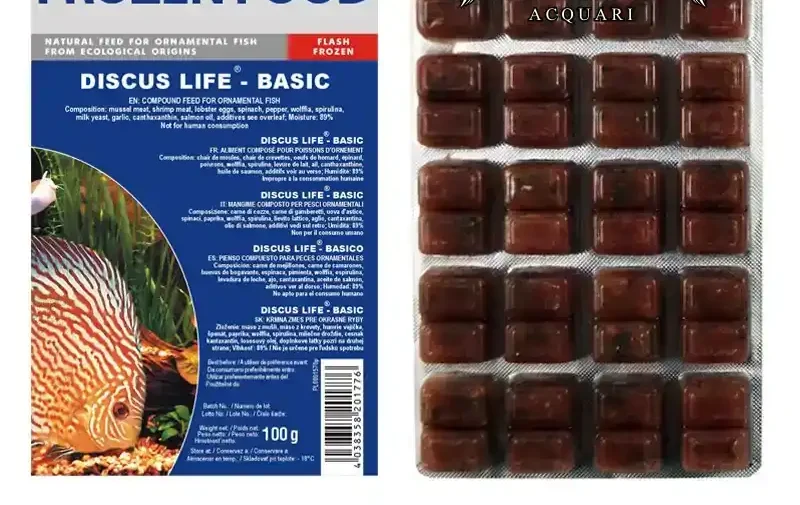






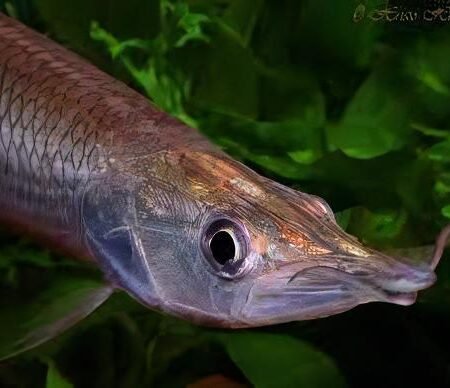
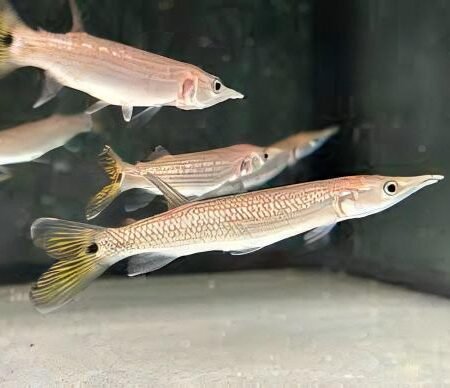
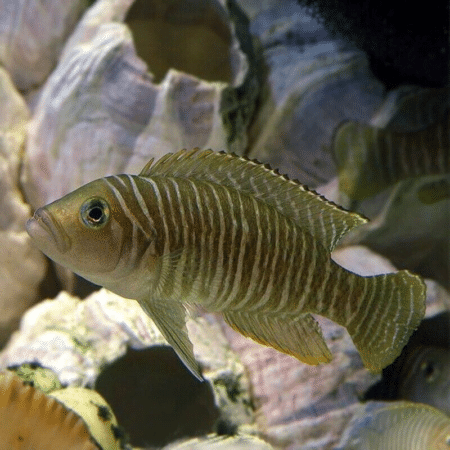
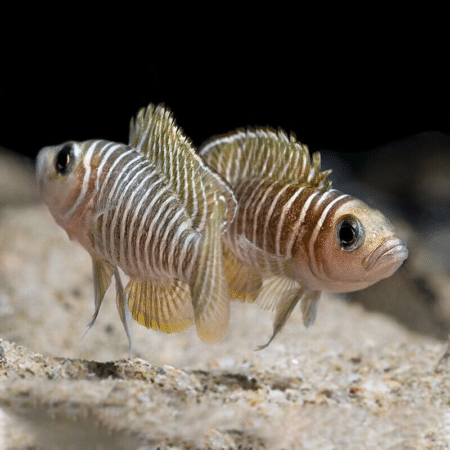
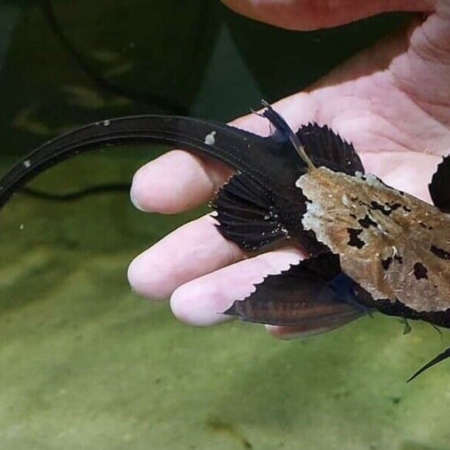

Emily Carter (verified owner) –
As a passionate aquarium hobbyist, I am always on the lookout for the best food for my discus fish, and the 6X100G Discus Life Basic Blister has truly exceeded my expectations! After using it for about two weeks, I’ve seen a huge improvement in my fish’s overall health and coloration. The flash-frozen formula ensures they’re getting all the nutrients they need without any fillers. What I love most is how eagerly they eat it; my discus swim to the surface the moment they see me! Compared to other brands I’ve tried, this one definitely offers better quality ingredients and doesn’t cloud the water as much. The blisters make it super convenient to feed and store, minimizing waste. I highly recommend this for both new and experienced fish owners who prioritize their fish’s diet. One minor concern is that it can be a bit tricky to thaw properly without losing some of the nutrients, so I usually let it sit out for a few minutes before feeding. Overall, this is a fantastic product that I will be purchasing again for my beloved discus!
Emily Rivera (verified owner) –
As a passionate fish parent, I prioritize the health and happiness of my discus fish, and the 6X100G Discus Life Basic Blister has exceeded my expectations! After using this flash-frozen discus staple feed for about two months, I’ve seen remarkable changes in my fish’s vibrancy and overall health. The food is easy to portion out, and my discus absolutely love it. Their colors have intensified beautifully, and they swim with such grace and energy in the tank.
What I appreciate most is the quality of the ingredients; it really shows when I compare it to other frozen foods I’ve tried in the past. Some alternatives left a mess in the tank, but this one stays clean and my fish finish their meals without any leftovers!
I would highly recommend this product to anyone with discus fish or even other tropical fish looking for a nutritious diet. Just be sure to store it correctly in your freezer to maintain its freshness. This product is worth every penny, and I’ll definitely be a returning customer!